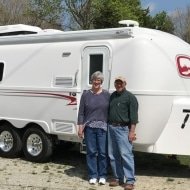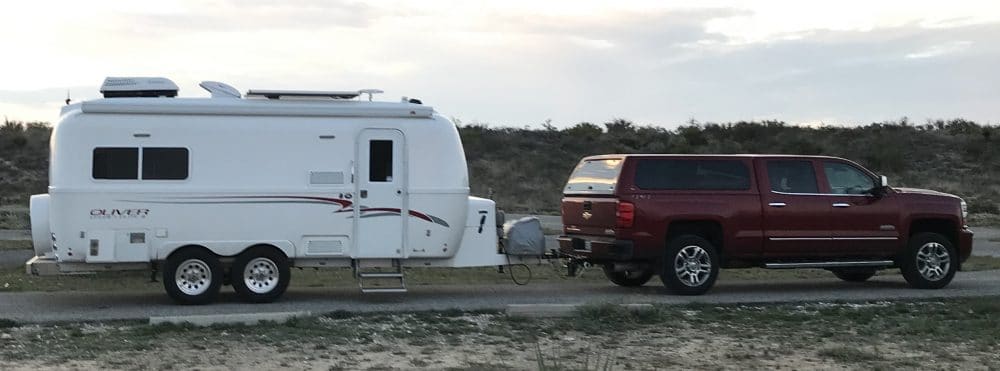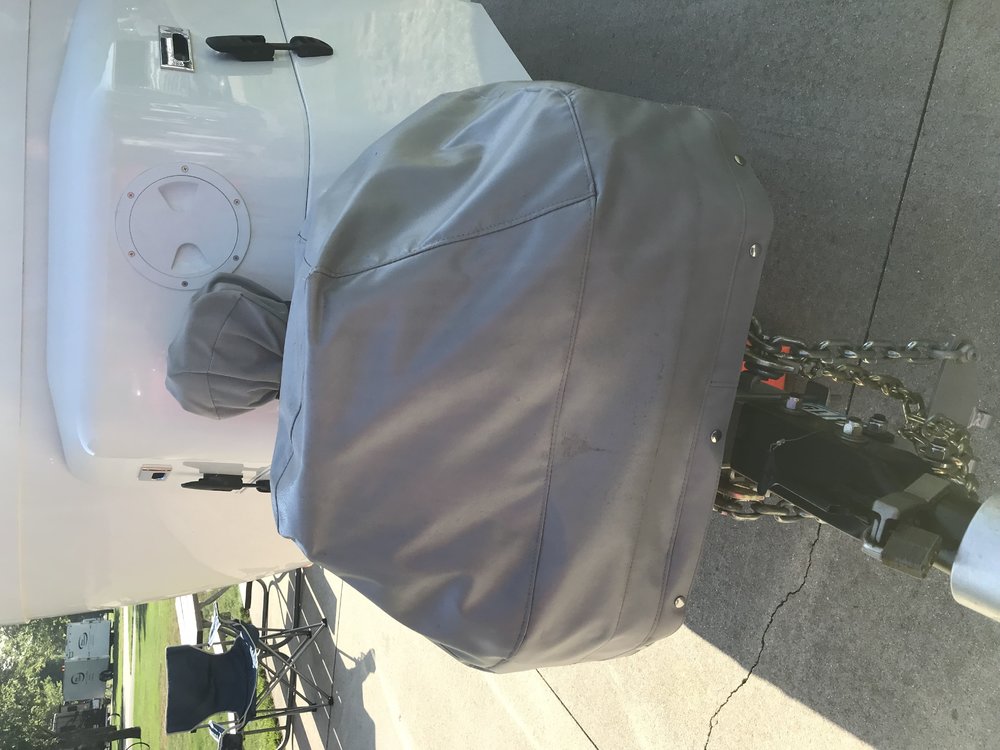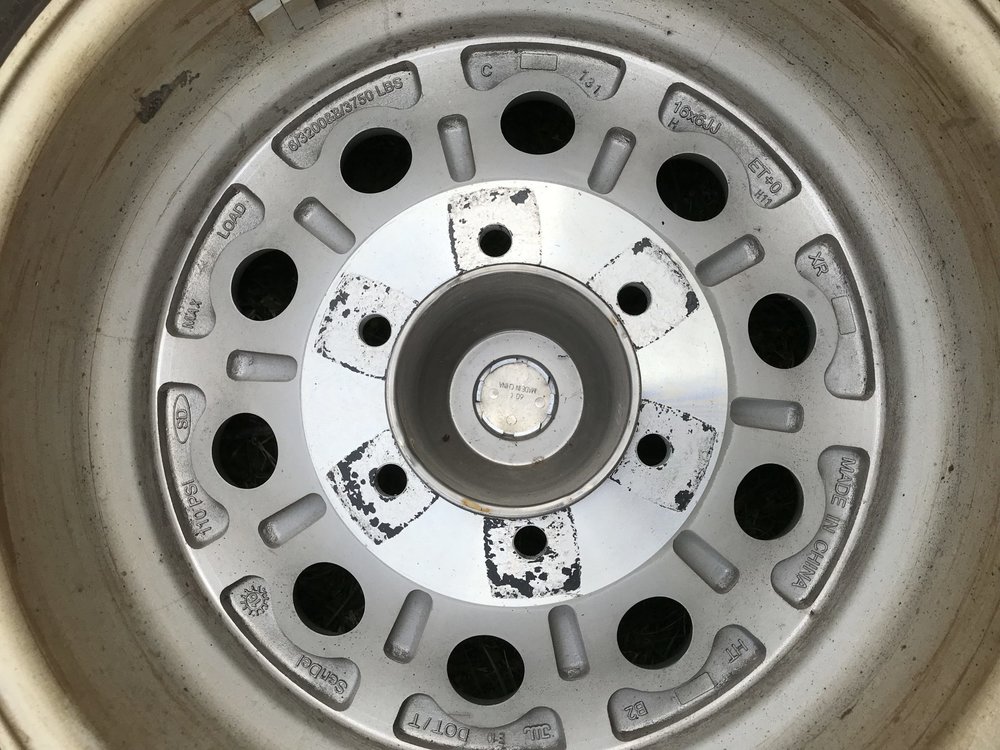-
Posts
413 -
Joined
-
Last visited
-
Days Won
17
Everything posted by mountainoliver
-
Mike, there are no bugs in Texas! It’s just too cold there. It’s always ice and snow and stuff...... at least when we’ve been there.
-

Inverter Problem and Incidental Mystery
mountainoliver replied to Spike's topic in General Discussion
Yes, the whole inverter is under the bed. Check for 12v between the two large cables connected to the inverter. Also, check for 12v on either side of the main fuse (150A I think) which is under the rear most dinette seat. Open the seat hatch and look to your left. You’ll see the red No. 4 welding cables, follow them to the main fuse. I think the others are correct in that the unattached red cable in the battery compartment should be attached, but check the above voltages first. -
The cover was a one off thing. I took the loaded basket to a canvas/upholstery shop at a lake. They make all sorts of covers, etc. for boats. I had to leave the loaded basket (generator and fuel can strapped in place) with them as they digitized the whole assembly and then fitted the cover. I also got a quote from an auto upholstery shop. Either one could do the work and you’d have to leave the loaded basket with them as well in order to get a proper fit. I used a heavy truck tarp material that is super strong but Sunbrella material would also be a good choice. The male snaps were ordered from McMaster-Carr, an industrial supply company, they are stainless steel with a (I think the size is) #8-32 stainless stud attached. Whoever makes the cover could supply the complete stainless snap assemblies. My basket is one of the older designs so it has a fairly heavy lower rail. I just measured evenly all around and drilled/tapped for the studs and installed them before I had the cover made/fitted. On the newer baskets, I would just drill through the sides close to the bottom and use nylon lock nuts on the inside for the male snaps. On a side note: Mike, if you’re interested I have a Firestone air bag assembly for a 2017 +/-Tundra which is like new. I used this only about 3-4 months until I traded for a different truck.
-
I carry/store my 2000w Honda generator and fuel in my basket. They are strapped down, locked and covered.
-
John, that’s great news! I hope to see you at the rally next year as well as out on the road somewhere. I really look forward to seeing that new trailer, they look great!
-
If you tow with a 1500, check your owners manual. The manufacturer may require a weight distribution hitch if the tongue weight is (I think the number is) 500 lbs or above. This is the manufacturer’s warranty continuation plan.
-

Dometic RM2454 fridge replacement
mountainoliver replied to mountainoliver's topic in Ollie Modifications
It’s my understanding that the Dometic will have some difficulty exiting the LEII but the Nova Kool can be moved in with no problem. -

Dometic RM2454 fridge replacement
mountainoliver replied to mountainoliver's topic in Ollie Modifications
Just today I have been looking at the Nova Kool R5810 fridge. It’s larger (5.8 cu. ft.) than the original fridge and fits in the same opening. It is 4 inches shorter in height than the original so if centered, that would provide two inches top and bottom for ventilation. The outside vents should be sealed off just to keep dirt out and the outside wall can be insulated. The electric fridge vents much like the one at home. -

Dometic RM2454 fridge replacement
mountainoliver replied to mountainoliver's topic in Ollie Modifications
Overland, you say that yours is a factory install? Did you not get the standard fridge at initial build or did Oliver retrofit the Isotherm later? Thanks for the other information as well. -
Who has replaced the standard troublesome Dometic refrigerator with a similar size 12 volt electric refrigerator? Mine has been a constant problem and I’m thinking about replacing it with an all electric model of similar size (4 cu. ft.). If you have done this modification I’m looking for tips on installation and what to consider or what to look for.
-
I just recently purchased this one and I’m still figuring it all out.
-
I have the Garmin 55 and like it. I have it set so that it can turn itself on if it detects movement when the truck is parked.
-
Right after I posted this question I looked under the pantry side bed turned off the main feed switch from the solar panels and then the 30 amp breaker. I then turned these back on. I also pressed in the yellow flag on the other breaker as well. This seems to have solved the issue but I’ll watch this for a few days to make sure.
-
Anyone experiencing flickering lights? Mine do this periodically and at first I thought that there was a defective switch. All of the lights flicker on occasion both inside and outside lights. I have noticed this both during the day and at night and either on shore power or not and either with the battery charger breaker on or off.
-

Who is towing with a Chevrolet 2500HD Duramax?
mountainoliver replied to dbp05ret's topic in Towing an Oliver
I had a 2017 Tundra 5.7L. We pulled our LEII from VA to Quartzsite once and Southwest Texas once. All of those trips were not easy with the Tundra and a few times down right frightening. I traded for a 2019 Chevy 2500 HD with the new design Duramax. I’ve had a Diesel truck before (for 20 years) but this one has some real power! My old one had 400 ft/lbs of torque on a good day. The Chevy has 910! That’s just off of idle at around 1800 rpm to around 2200 rpm or so. Right in the sweet spot for cruising on the highway. We’ve pulled our 6,500 lb. LEII to Quartzsite once, meandering home through Southwest Texas, and around the Southeast. We have about 10,000 miles on the truck so far. I use an app called Fuelly that keeps track of mileage and various other fuel related costs. In closely duplicating routes the fuel only cost per mile between the Tundra and the Duramax are just literally a penny or so even keeping in mind that Diesel fuel is more expensive. If you figure in the DEF required every 3,000 miles or so the cost per mile is a little more for the Chevy but not significant enough to worry about. For me the towing experience is much more comfortable (read safer feeling). Power is not a concern and I can descend a mountain without hardly touching the brakes. Less stress on the truck will equal a longer lasting truck. So far I really love the truck. -
Looks too complicated to make one from a solid piece of aluminum or stainless. I’d buy some online maybe less expensive than from Oliver, unless somehow they would be warranted through Fiamma. I think that I’ll get at least one as a spare. Something small like this could really mess up a long trip! I’m assuming that the screws just thread into the fiberglass? In other words, there’s not a nut or something else loose on the back?
-
That would be my advice as well. Use the blue (low strength) loctite brand and only use just a tiny bit at that! If you use the red or green color you may never get the hinges apart!
-
Thanks, I’ll try that as well. The brand spanking new fridge that Dometic sent Oliver and was installed failed in the same way the old one did. Not sure what’s up but ALL trailer systems have been tested by myself and Oliver with Dometic’s blessings. I’ve lost count of the number of new sets of control boards that have been replaced. Still the same issue, albeit much less frequent. Rumor has it that Dinosaur is designing a matched set of replacement boards. That should solve the Dometic cheesy control board issues.
-
Another update: on the way to Guntersville we still had the intermittent failure issues but it seems to be not as often. Keep in mind that it always works on either AC or DC, it just intermittently fails on propane and it doesn’t make any difference if it’s on shore power or not. For some reason it will run perfectly for four days and then fail, turn it off and back on and it’s good for another four days. This hasn’t been totally proven out yet but I’m still trying different things. After we get home I want to do some thorough testing, again.
-
<p style="text-align: left;">A huge thanks to all of the Oliver employees who were able to be at this years rally! So much of the behind the scenes work was done by them. The service folks were here and worked nearly non stop performing repairs for several days during the rally. For the new Oliver owners or the soon to be owners you experienced just a small sampling of the Oliver team dedication. A dedication that starts at the very top and extends throughout the organization! Thanks to you all.</p>
-
John, don’t know if you could see the photo of mine but, yours is very similar. I thought the very same thing that Bondo was used instead of grinding out and filling with fiberglass resin/fiberglass material and ground/sanded flush and gel coated. Anyway I think that both of my hole plugs are still in place.
-
We’re “camped” at the sales office now and are going to Guntersville tomorrow. We’ll be in E4.
-
Yukon, if you are coming to the rally please look me up. My wife is helping with the rally so we should be easy to find. As I showed in the above attached photo, I have the same mysterious holes in my trailer and they look to be in the similar location. I would like to hear your take on them. I heard two explanations for them. 1. A new employee accidentally drilled the holes in the wrong location (?) and 2. Drilled on purpose (?). Anyway, mine were not painted over so I was able to clearly see them.
-

First Impressions are ⬆️⬆️⬆️
mountainoliver replied to RetiredPPDFive-Oh's topic in Introduce Yourself
Welcome! We stumbled on the Oliver as well while looking for large molded fiberglass campers two years ago. Your first impression of the Oliver camper is pretty much typical of other folks and as you dig deeper you’ll be just as impressed. You’ll see posts of praise for our service department but again that is just the beginning. The Oliver quality starts at the top and continues throughout. The folks building our campers do a great job. You’ll be able to see that easily in the fit and finish. Everyone cares about what they do. Enjoy the search! -

Wheels, model, warranty, care
mountainoliver replied to John E Davies's topic in Mechanical & Technical Tips
Here’s a photo of the backside of my wheel from hull number 208. Note max pressure is 110 psi, max load for a 6 lug wheel is 3200 lbs. these are Sendel wheels made in China.




